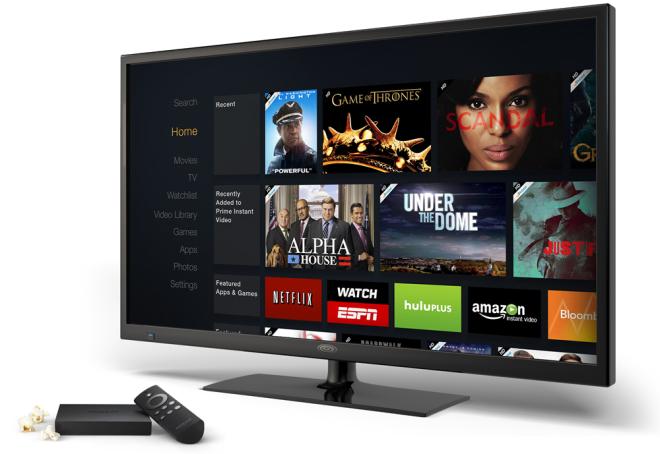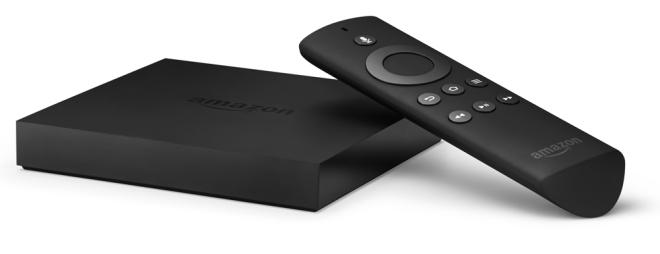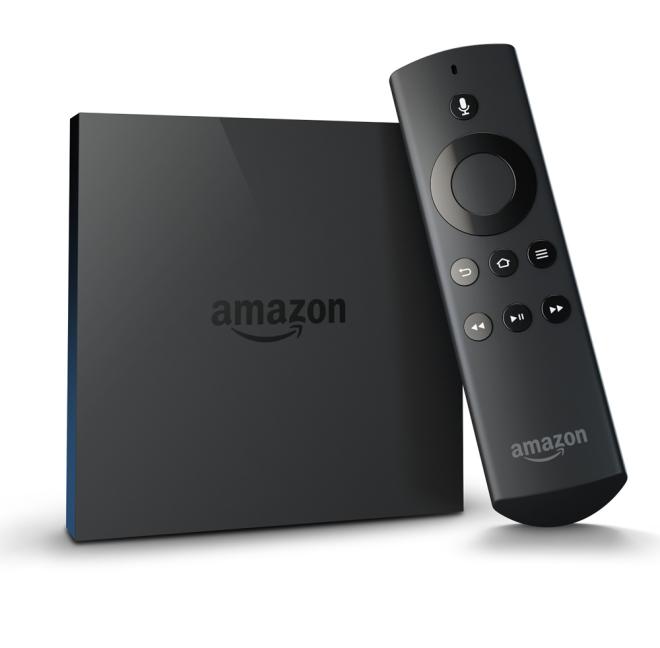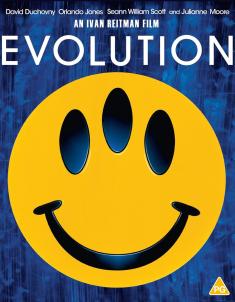Amazon Fire TV Review
Overview -Looking to leap directly into the competitive set-top box market, the Amazon Fire TV is the retailer's answer to extending the reach of Amazon Instant Video into the living room, as well as interconnecting devices like the Kindle Fire HDX tablet line. Going up against products like the Roku 3, Apple TV and Chromecast as well as the previous generation and current generation of video game consoles, the Fire TV provides access to popular streaming video applications such as Netflix and Hulu Plus while heavily promoting Amazon's ecosystem of content at the same time.
In addition, Amazon is heavily promoting new features such as voice search, content caching for fast playback, parental control functions as well as the FreeTime content library for children, second screen capabilities with IMDB integration and the ability to play tablet-quality video games on the big screen.
Hardware Design:
It's amazing how slim set-top boxes have become over the last few years. While the Fire TV takes up more surface area than devices like the Roku 3 or Apple TV, the device is thinner than a dime sitting up on edge. On the back of the device, you will find the A/C power connection, HDMI output, optical audio output, wired Ethernet connection and a USB 2.0 port. While Amazon hasn't mentioned what the USB port will be used for, it's likely that external storage will be at the top of the list since only 5.5GB of the 8GB flash drive is available for downloading applications and games.

On the inside, the hardware powering the Fire TV is very similar to the Kindle HDX tablet line. It includes a quad-core Snapdragon S4 processor that's also capable of providing 1080p GPU support. In addition, Amazon has included 2GB of RAM, MIMO dual-band Wi-Fi, Bluetooth compatibility and support for Dolby Digital Plus 5.1 surround sound.
The remote control seems to be an amalgamation of the Apple TV and Roku 3 remote control. At the top, you will notice the voice search button that turns on the microphone in the remote when you want to search for content. Beneath that, you will notice a direction pad as well as the Home button, the Back button and a List button. In addition, the standard set of Play / Pause and Rewind / Fast Forward buttons are at the bottom.
The remote has an excellent feel, mostly because there's a slight heft to the design and the smooth plastic is more inviting than the cold, metal of the Apple TV remote. It's also more attractive than the shiny, finger-print magnet that is the Roku 3 remote. However, there's no headphone jack included, a Roku 3 feature that's invaluable in some households.
Setup and User Interface:
Upon starting up the Fire TV for the first time, I immediately connected the remote over Bluetooth and entered my Wi-Fi password to connect to the home network. As with most devices, the Fire TV will require a firmware update when you take it out of the box. This took an abnormally long time, approximately 35 minutes to download and install the update. The messaging on the screen tried to blame my network connection (60 Mbps download speeds), thus it's possible that Amazon's servers were getting hammered at launch.
Once it finally finishes, you have to sit through an obnoxious, unskippable video that explains how to use the Fire TV. Feel free to ignore the video as it doesn't offer much knowledge if you have used any streaming set-top box in the last five years.

If you purchased this Fire TV for yourself, Amazon will have preloaded your Amazon account on the Fire TV. Basically identical to the procedure used for Kindle tablets, all video content in your library will be ready to stream. You also have the option of setting up parental controls at this point, ideal if you have children in the home.
Once loaded, you will notice that the interface is similar to the Roku 3 or even the Amazon Instant Video application on other devices. The user can scroll through menu options on the left and choose content options on the right. Only content on Amazon Instant Video will appear on the right. To see content in applications like Netflix or Hulu Plus, you have to specifically launch those applications.
I noticed that it gets difficult to find installed applications after adding several apps and games. Basically, Amazon wants to keep the focus on Amazon content. If you subscribe to Amazon Prime, you will notice that Amazon includes a small ribbon in the top left corner of content that indicates if the content is free to stream with a Prime membership.
Voice Search:
First off, if you haven't watched Gary Busey's commercial for voice search, do yourself a favor and put a smile on your face for the next 60 seconds. I have to give Amazon executives serious credit for greenlighting Busey as a pitchman. The commercial works beautifully in a completely ridiculous way.
I've tried about 30 different voice searches at this point and I'm really impressed with the pinpoint accuracy of the software. It's significantly better than the Kinect on my Xbox One, perhaps because I'm holding the microphone two inches from my mouth. I searched actor and actress names, movie and television show titles, genre types and even some random words. It's absolutely on target each time.

Sadly, Amazon has approached search results with revenue generation in mind rather than user experience. For example, if you have installed the Netflix application and perform a voice search for 'House of Cards', the search results will be Season 1 of 'House of Cards' on Amazon Instant Video at $2.99-per-episode. Netflix's results are not indexed, thus voice search doesn't bring up the first two seasons of 'House of Cards' that can be streamed for the $7.99-per-month subscription price.
Regarding Hulu Plus, Fire TV will bring up the option of Hulu Plus occasionally. For instance, voice searching for 'Modern Family' will bring up an option for Hulu Plus, but only after you filter to the Apps & Games section of the search results. In addition, Fire TV doesn't list the episodes available on Hulu Plus, only a general link to the app. It also doesn't work for everything. For example, searching for 'Grimm' will only bring up Amazon's episodes listings, despite it being listed on Hulu Plus. The same goes for Hulu exclusive content.
If you want a device with true universal search, I recommend sticking with the Roku 3 (or the new Roku Streaming Stick for a less expensive option). That set-top box will bring up all the sources of said content rather than pigeonholing the user into one service. While I love how easy it is to search using my voice on the Fire TV, I hate the fact that Amazon can't tell me what's available on popular streaming services that I subscribe to. If anything, Amazon has made search significantly worse.
Streaming Performance:
If you're like me, speed is huge when launching content. I want to be able to sit down in my home theater, crank up the television and start playing something on Netflix within seconds. Waiting around for devices to boot up is something I had to do ten years ago, not 2014.
With that in mind, I completed some timing tests comparing the Fire TV, Roku 3, Apple TV and Google Chromecast. This test measures the moment that I click the remote to launch a video to the moment that it starts playing on my screen. I performed each test five times for each application and took the average of those times for each device. For reference, I'm using a Netgear WNDR3000 router and a Wi-Fi connection on all devices. In addition, I'm using my iPhone 5 to stream content to the Chromecast.
- The top Netflix performer was the Roku 3 with an average time of 4.5 seconds to launch content. Chromecast wasn't far behind at 6.6 seconds. Amazon Fire TV took an average of 9.1 seconds and Apple TV was a distant fourth at 20.3 seconds.
- The top Hulu Plus performer was the Roku 3 again with an average time of 3.2 seconds. Apple TV stepped it up at 5.2 seconds, Chromecast clocked in at 6.4 seconds and Fire TV was in fourth place with 9.6 seconds.
- The top YouTube performer was the Roku 3 at 4.5 seconds. However, there wasn't much difference in the other devices. The Apple TV launched in 4.8 seconds, Fire TV took 5.1 seconds and Chromecast closely followed at 5.5 seconds.

While Amazon is consistently lagging behind competitors for third party app speed, it completely dominates on delivering content quickly through Amazon Instant Video. I queued up some television shows that I've watched before ('Orphan Black' and '24') and video started in an average of 2.2 seconds. Amazon's ASAP feature does a heck of a job caching content that you are likely to watch.
In addition, the video was crystal clear in full HD resolution almost immediately. I didn't have to wait 5 seconds for the video to buffer and quality to increase like I did with the Netflix application. Of course, the speed of HD video clarity will be highly dependent on your network connection. During peak congestion hours, you may have trouble loading content quickly on all applications.
Just a note, one potential problem with ASAP is that caching uses the Fire TV's internal 8GB hard drive to a certain extent. If you fill up available storage space completely with games and other apps, Amazon's ability to cache video will suffer. It's also pretty easy to completely fill up the available space on the Fire TV as some of the game downloads are 1GB in size or more. Hopefully, Amazon will enable the ability to connect additional storage drives to the USB port on the device, otherwise you will constantly have to manage the data on your Fire TV.
Video Content / Games:
Amazon did a good job of providing apps for the major streaming video players, but is missing apps for HBO and VUDU. Amazon is also trailing behind Roku significantly on the music front and doesn't offer support for Spotify, Slacker, MOG or Rdio yet. Roku is also leading the pack in regards to tons of alternative Web content to the tune of 1,200 applications, a number that will take Amazon quite a while to reach. However, one cool feature is multitasking with music applications. For instance, you can play music in the Pandora app while playing a video game.

Alternatively, Amazon will probably lead the charge for tablet games on the big screen. At the moment, the retailer offers about 100 games and that number will likely explode over the next few months. According to Amazon, porting games available for the Kindle Fire isn't terribly difficult. Amazon is also investing in gaming content on their end and the Fire TV game controller ships with Amazon's 3D tower defense game 'Sev Zero'.
Conclusion:
There are multiple positive aspects of the Fire TV, such as the well-designed remote, extensive parental control options, accurate voice search readings, intuitive user interface and impressive video caching for Amazon Instant Video content. However, as a universal streaming video player, the Amazon Fire TV is extremely underwhelming. With the beefy hardware, you would expect to see significant performance improvements in application speed, content loading times and search capabilities.
Sadly, it just doesn't live up to the hype. At the moment, it's lacking important content partners such as HBO GO, Spotify and VUDU. In addition, third party apps aren't treated with the same level of respect as the Amazon Instant Video application or content library. On top of that, the Roku 3 is arguably more proficient at finding and playing content from multiple third party sources. In short, the Fire TV isn't going to replace the other streaming devices in your home theater until Amazon works hard to improve the software.
That being said, if you are heavily invested in the Amazon ecosystem of content as well as Amazon Prime, you won't find a better set-top streaming device to play the video content specific to Amazon Instant Video. It's also integrated with the Amazon HDX tablet, thus acts as an excellent complementary device for second screen functions. As a gaming console, it shows promise and is definitely a better solution for Android games than the OUYA. However, it's obviously not going to be able to compete with gaming consoles like the Xbox One or PS4.












